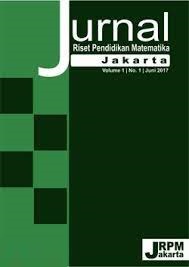Flipped Classroom Learning Design in Mathematics Learning on Vector Material
Flipped Classroom Learning Design in Mathematics Learning on Vector Material
DOI:
https://doi.org/10.21009/jrpmj.v2i1.26067Keywords:
Learning Design, Flipped Classroom, Mathematics LearningAbstract
The development of learning by involving technology is one of the impacts of the rapid development of technology. Currently educators are still determining the appropriate learning model for the teaching process, the lack of teaching time in schools is one of the problems that arise and understanding student concepts is also the reason student learning outcomes are not satisfactory. There are many challenges faced by teachers and students in learning mathematics today. Several alternative solutions to these challenges can be found in the literature, one of which is by implementing a flipped classroom. In the flipped classroom, learning activities that are usually carried out in the classroom are carried out outside the classroom. Thus, activities in the classroom can be focused on activities that can stimulate students to think at a higher level. Although it looks promising, this kind of learning does not always have a positive impact on student learning. Therefore, this flipped classroom needs to be designed in such a way that it has more value in terms of learning design. Providing flipped classroom learning design elements into this learning will have the potential to increase the quality of mathematics learning. Therefore, this article will review the literature related to the flipped classroom learning design in learning mathematics on vector material. Specifically, this article will examine the definition and design of the flipped classroom, along with the challenges of its implementation. Finally, this article will review studies that have designed and implemented flipped classrooms in mathematics learning, especially in vector material. From the results of the theoretical study, it can be concluded that the steps in the design of vector material flipped classrooms can support mathematics learning and have the opportunity to be developed in various units of education level.




